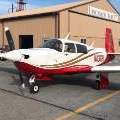Precision Approach Personal Minimums (Poll)
ILS personal minimums
48 members have voted
-
1. What are your precision approach personal minimums to plan?
-
100ft above runway if you can see the lights3
-
200-1/212
-
400-112
-
600-25
-
800-37
-
1000-57
-
MVFR0
-
VFR0
-
Not instrument rated2
-
-
2. What are your precision approach personal minimums to attempt the approach?
-
100ft above runway if you can see the lights5
-
200-1/218
-
400-111
-
600-26
-
800-34
-
1000-52
-
MVFR0
-
VFR0
-
Not instrument rated2
-
-
3. What are your precision approach personal minimums to go missed?
-
100ft above runway if you can see the lights9
-
200-1/222
-
400-18
-
600-23
-
800-32
-
1000-52
-
MVFR0
-
VFR0
-
Not instrument rated2
-


Recommended Posts
Join the conversation
You can post now and register later. If you have an account, sign in now to post with your account.